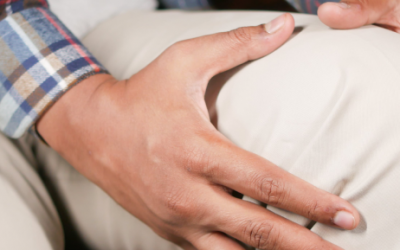What is Sciatica?
Sciatica refers to irritation of the sciatic nerve, which runs from your lower back to your feet. This condition is usually experienced as pain radiating down the leg. In about 90% of cases, sciatica is caused by a herniated or slipped disc that compresses the nerve root. Other causes include spinal degeneration and stenosis, which narrow the pathways through which the sciatic nerve travels.
“Sciatica is pain down the leg due to irritation of the sciatic nerve”
Common Symptoms
- Unilateral Leg Pain: Pain in one leg that is greater than low back pain.
- Radiating Pain: Pain extending to the foot or toes.
- Numbness and Tingling: Pins and needles sensation in the same distribution as the pain.
- Risk Factors: Personal factors include age (peak incidence between 45-64 years), increased risk with height, smoking, and mental stress. Occupational factors such as strenuous physical activity, frequent lifting (especially while bending and twisting), and driving may also contribute to the development of back and leg pain.
Recovery
Most people improve within 4-8 weeks with appropriate care, depending on the severity of the condition.
“Contact 999 if you have loss of control of both leg and feet; numbness or tingling in the genitals or around or you suddenly can’t pee or control when you pee or poo. This may indicate a more serious problem.”
What You Can Do
- Stay Active: Keep moving as much as you can tolerate.
- Avoid Bed Rest: Prolonged rest can worsen symptoms.
- Avoid Aggravating Activities: Steer clear of movements that worsen your symptoms.
- Pain Management: Speak to your pharmacist about pain medications.
- Seek Professional Help: Contact your local osteopath to assess your symptoms.
How We Can Help: Explain – Treat – Advise – Rehabilitate
Education and Advice: We explain your condition and how to actively manage your symptoms. Understanding your condition can reduce unnecessary stress and anxiety.
Tailored Treatment: We offer comprehensive treatments to reduce pain and facilitate recovery.
Therapeutic Exercises: We guide you through exercises to help you return to normal activities as soon as possible.
Prevention Strategies: We help you create personal prevention strategies to avoid future issues.
Patient-Centered Care: We refer you for scans, tests, or to appropriate consultants if further investigation is needed.
How to Prevent Sciatica
Sciatica has various causes, but you can take simple steps to reduce your risk of injury:
- Practice Correct Posture: Maintain good posture when standing, walking, and sitting to avoid back injuries.
- Avoid Smoking: Smoking is linked to back pain.
- Safe Lifting Techniques: Use your legs to lift, don’t twist, and ask for help with heavy objects.
- Maintain a Healthy Weight: Extra weight adds stress to the spine.
- Stay Physically Active: Core strength helps support the spine.
See also:
- Slipped Disc or Disc Herniation
- Exercises for Back Pain
- 3 Steps to deal with Back Pain
- 8 Tips to Avoid Neck Pain
Sources:
Diagnosis and treatment of sciatica. BMJ. 2007 Jun 23; 334(7607): 1313–1317. B W Koes, M W van Tulder.
https://www.nhs.uk/conditions/sciatica/



